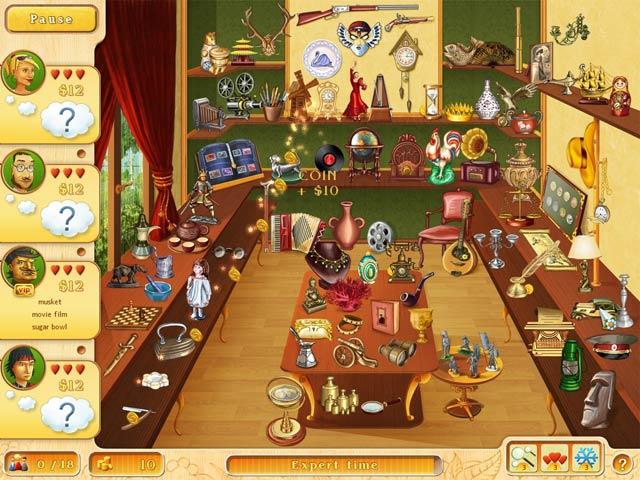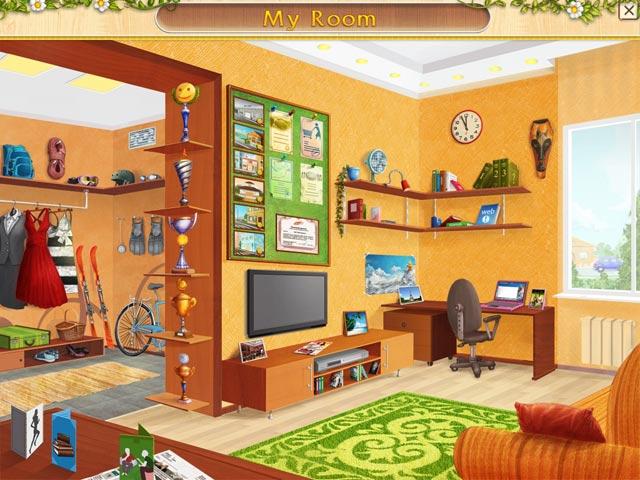- Wondering how to get Monopoly GO! free rolls? Well, you’ve come to the right place. In this guide, we provide you with a bunch of tips and tricks to get some free rolls for the hit new mobile game. We’ll …
Best Roblox Horror Games to Play Right Now – Updated Weekly
By Adele Wilson
Our Best Roblox Horror Games guide features the scariest and most creative experiences to play right now on the platform!The BEST Roblox Games of The Week – Games You Need To Play!
By Sho Roberts
Our feature shares our pick for the Best Roblox Games of the week! With our feature, we guarantee you'll find something new to play!All Grades in Type Soul – Each Race Explained
By Adele Wilson
Our All Grades in Type Soul guide lists every grade in the game for all races, including how to increase your grade quickly!
Time to Hurry: Nicole’s Story Review
Time to Hurry: Nicole’s Story takes a page from games like Shop-n-Spree to mix hidden object and time management genres in a way that is simple enough for all skill levels, but also offers a real level of challenge for those looking for one.

Aptly named, Time to Hurry: Nicole’s Story will have you rushing to find the items you need, but that’s in no way a bad thing.
Time to Hurry: Nicole’s Story takes a page from games like Shop-n-Spree to mix hidden object and time management genres in a way that is simple enough for all skill levels, but also offers a real level of challenge for those looking for one.
The story follows Nicole, a college graduate who has spent a year at a job that she thought she would love, but leaves her feeling unfulfilled. When she learns that her grandmother’s gardening store will be sold due to lost funds, she quits her job, flies home and takes on the task of single-handedly resorting the family business to its former glory.

Gameplay is level-based, and sees you serving customers as they walk into the store. Customers are presented along the left side of the screen, with all of the objects that a customer could potentially ask to purchase being presented in a cluttered hidden object scene that takes up the rest of the screen. Each customer has a list of two or three objects that they’d like to purchase, and you must find and click on them in the store.
While that easily explains the hidden object portion, the time management aspect is tackled in a few ways. First and foremost, customers have a series of “patience” hearts associated with them. The longer they wait to be served, the more hearts they lose over time, and if they lose all three of their hearts before you can find all of their wanted items, they will leave the store unsatisfied. Once a customer leaves, another takes its place, and so on, until you have met the quota of customers for that level.
You’ll spend eight levels helping your Grandmother restore her shop, at which point you’ll be asked to move to another store and help one of your grandmother’s friends do the same. This continues until you have unlocked all six stores that are available in the game, like an Antique Store or Japanese gifts store.
To keep the variety and challenge high, the locations of objects in each store change every level. Each time you start at a new store, you are presented with just a portion of the items that will eventually become available, as the selection increases on subsequent levels until the store’s shelves, and even the floor are literally packed with dozens of items.

In this is where the game hits its one major flaw, with that being some of the oddly named objects. When seeing the words “glass handle” on a customer’s wishlist, for instance, you would likely look for a clear glass handle, on the door of a cabinet or drawer. It would be highly unlikely that you would look for a blue beer flask, which is actually what the “glass handle” here equates to.
Luckily, you can use hints that allow you to instantly find one item on the current customer’s shopping list, and after you’ve learned what phrases or terms go with which items, the issue dissipates, which is true for the overall challenge in the game as well, as you’ll become more and more comfortable with the shop’s layout, and where items are normally placed as you go along.
The money you earn in each level can be spent in between levels in a fairly interesting way. Rather than upgrading your shops, you’re allowed to upgrade Nicole herself in four areas: Fitness, Career, Personal, and Outlook. Since Nicole was so unsatisfied at her former job, you’re now allowed to purchase items to help her open her mind and heart to new activities, take new classes, meet new friends, and overall become a more well-rounded and happy individual. This helps you in gameplay as well, as your Fitness level allows you to hold more bonus power-ups (like the hints I mentioned, and those that restore customer patience), and your Career level simply slows the overall diminishing of customer patience.
There are also a few basic puzzle levels that appear during the game’s progression. These come in the form of jigsaw puzzles, tile sliding puzzles, spot the difference and so on. The gameplay doesn’t suffer for their inclusion, but they do feel unnecessary.
All told, Time to Hurry: Nicole’s Story takes a road less travelled approach to the hidden object genre. While the gameplay does become repetitive over time, the simple fact that the store items change places keeps you on your toes in a way that most other games simply can’t provide. Time to Hurry: Nicole’s Story is a frenzied, yet definitely entertaining experience that is perfect for those looking for a little something a little different.

The good

The bad
More articles...
Monopoly GO! Free Rolls – Links For Free Dice
By Glen Fox
Wondering how to get Monopoly GO! free rolls? Well, you’ve come to the right place. In this guide, we provide you with a bunch of tips and tricks to get some free rolls for the hit new mobile game. We’ll …Best Roblox Horror Games to Play Right Now – Updated Weekly
By Adele Wilson
Our Best Roblox Horror Games guide features the scariest and most creative experiences to play right now on the platform!The BEST Roblox Games of The Week – Games You Need To Play!
By Sho Roberts
Our feature shares our pick for the Best Roblox Games of the week! With our feature, we guarantee you'll find something new to play!All Grades in Type Soul – Each Race Explained
By Adele Wilson
Our All Grades in Type Soul guide lists every grade in the game for all races, including how to increase your grade quickly!







